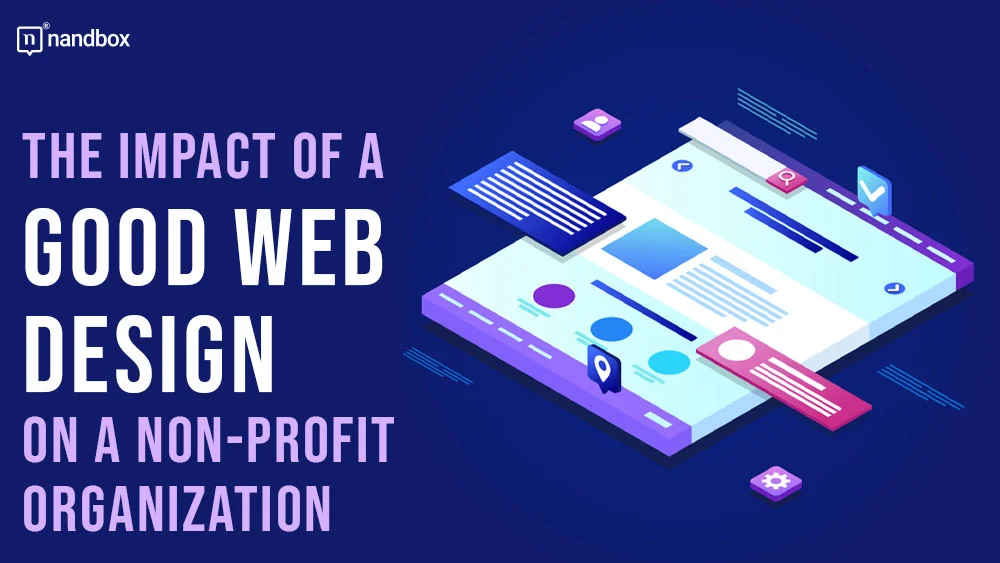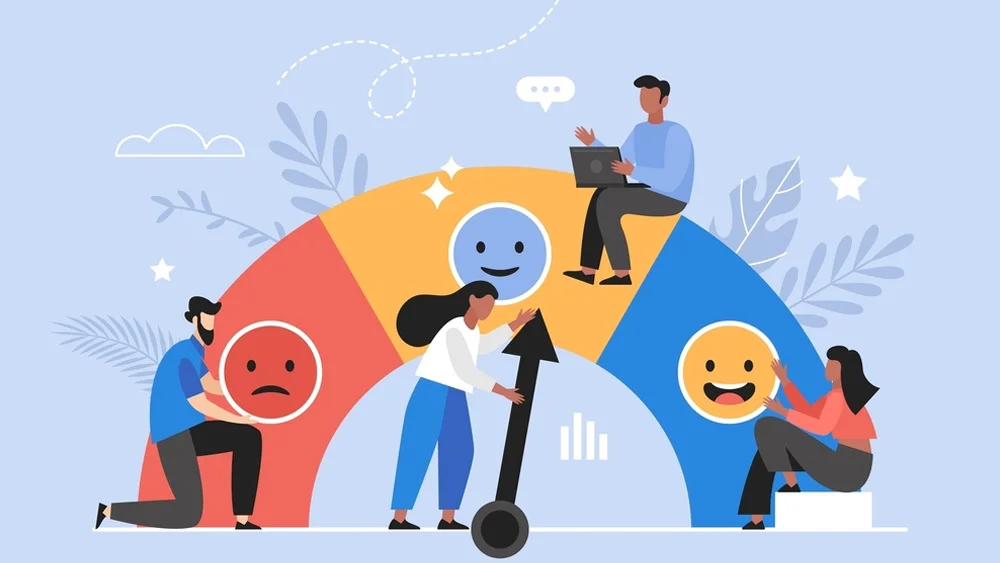Does Your Website Genuinely Reflect Your Organization’s Mission?
In a world dominated by digital interactions, a non-profit website often serves as the first—and sometimes only—impression for potential donors, volunteers, and beneficiaries.
A well-designed website is more than a virtual brochure; it’s a powerful tool that can significantly impact a non-profit organization’s success. From attracting donors to engaging volunteers, thoughtful web design can make a world of difference.
Let’s explore how impactful web design can enhance a non-profit’s ability to achieve its goals.
Enhancing User Experience and Engagement
User experience (UX) is at the heart of effective web design. Creating a positive UX for non-profits can be the difference between a one-time visitor and a long-term supporter. Regular Webflow maintenance ensures your site stays functional, user-friendly, and engaging for your audience.
Intuitive Navigation
Navigation is the roadmap of your website. When visitors can easily find what they are looking for, they are more likely to stay engaged and take action.
Key elements of intuitive navigation include:
- Clearly labeled menu items: Use straightforward, descriptive product labels that your audience will understand.
- Logical grouping of information: Organize content in a way that makes sense to your visitors, not just your internal structure.
- Easy-to-use search function: Implement a robust search feature to help visitors quickly find specific information.
- Breadcrumb trails: For complex sites, breadcrumbs help users understand where they are and how to get back.
Consider implementing a “mega menu” for larger sites, which can display multiple levels of navigation at once. This can help visitors see the full scope of your offerings at a glance.
Mobile Compatibility
With mobile devices accounting for over half of web traffic, mobile optimization is crucial. Responsive design ensures your site looks and functions well on screens of all sizes. Use a flexible grid layout that adjusts to screen size, optimize images for faster loading, and implement touch-friendly navigation and buttons to enhance user experience. Mobile users often look for quick information, such as contact details or donation options, so make these easily accessible on mobile versions.
Building Trust and Credibility
Trust is the currency of non-profits. A professional, well-designed website can significantly boost your organization’s credibility.
Professional Appearance
A polished website reflects well on your organization. It suggests that you’re serious, competent, and worthy of support. This is where nonprofit web design becomes crucial. By employing best practices in nonprofit web design, you can ensure that your site not only looks professional but also aligns with the specific needs and goals of your organization.
Elements of a professional web appearance:
- Consistent branding across all pages
- High-quality, relevant images
- Clean, uncluttered design
- Error-free, well-written content
- Up-to-date information
Showcase your achievements, partnerships, and endorsements prominently. This can include logos of partner organizations, testimonials from beneficiaries, or statistics demonstrating your impact.
Clear Calls to Action
Every page on your site should guide visitors toward taking action, whether it is making a donation, signing up for a newsletter, or volunteering.
Effective call-to-action strategies:
- Use action-oriented language (e.g., “Donate Now”, “Join Our Cause”)
- Make buttons stand out with contrasting colors
- Place CTAs in prominent locations, like the top of the page or end of compelling stories
- Use A/B testing to optimize your CTAs for better performance
Remember to tailor your CTAs to different audience segments. For example, a first-time visitor might be more likely to sign up for a newsletter, while a returning visitor might be ready to make a donation.
Increasing Donations and Fundraising Efficiency
A well-designed website can significantly boost your fundraising efforts by making it easy and appealing for visitors to contribute.
Streamlined Donation Process
The donation process should be as frictionless as possible. Minimize the number of steps required to complete a donation, offer multiple payment options, provide suggested donation amounts along with custom options, and clearly explain how donations will be used. Implementing a “quick donate” option for returning donors can make transactions faster.
Goal Setting and Progress Updates
Being transparent about your fundraising goals and progress can motivate donors and create a sense of urgency. Use visual progress bars for ongoing campaigns, provide regular updates on how funds are being used, and share stories and testimonials that demonstrate the impact of donations. Celebrate milestones and thank donors publicly (with permission).
Improving SEO and Online Visibility
A beautiful website won’t help your cause if no one can find it. Effective web design includes strategies for improving your visibility in search engine results.
SEO Best Practices
Search Engine Optimization (SEO) is about making your site more attractive to search engines, helping you rank higher in relevant searches.
Key SEO strategies for non-profits:
- Use relevant keywords naturally throughout your content
- Optimize page titles and meta descriptions
- Ensure your site has a logical structure with clear hierarchies
- Use header tags (H1, H2, etc.) correctly
- Optimize images with descriptive alt text
- Ensure your site loads quickly
- Make your site mobile-friendly (this affects search rankings)
Consider creating location-specific pages if your non-profit serves multiple areas. This can help you rank for local searches and connect with community members more effectively.
Content Strategy
Regular, high-quality content keeps your site fresh and gives search engines more to index, thereby improving your visibility. Maintain a blog with regular posts about your cause and its impact, create in-depth resources related to your mission, share news and updates about your organization, and produce multimedia content like videos and infographics. Encourage user-generated content, such as volunteer stories.
Utilizing Social Media Integration
Your website should complement your social media efforts to maximize your reach and engagement.
Social Media Links
Make it easy for visitors to connect with you on social platforms and share your content. Include social media icons in your site’s header or footer, add social sharing buttons to blog posts and key pages, and consider embedding social media feeds on your homepage.
Campaign Promotion
Use your website as a hub for your social media campaigns, and vice versa. Create dedicated landing pages for social media campaigns, use your website to provide more in-depth information about social media initiatives, and embed social media posts or tweets related to current campaigns on your site. Use your website to host and promote social media contests or challenges.
Attracting Talent and Volunteers
Your website is a powerful tool for recruiting both staff and volunteers.
Professional Image
A well-designed website can attract high-quality candidates by showcasing your organization as professional and impactful. Create a dedicated “Careers” or “Join Us” section, highlight employee or volunteer testimonials, showcase your organization’s culture and values, and provide clear, detailed job or volunteer role descriptions. Highlight professional development opportunities.
Clear Information
Make it easy for interested individuals to learn about opportunities and get involved. Create a user-friendly volunteer application process, clearly outline the skills and time commitment required for different roles, provide FAQs addressing common questions from potential volunteers, and offer virtual or remote volunteering options. Highlight the benefits of volunteering, such as skills development.
Reducing Operational Costs
A well-designed website can serve as a tool for automating processes and providing self-service options, reducing the workload on your staff.
Automating Tasks
Automation can free up valuable time and resources, allowing your team to focus on more strategic activities. Areas, where automation can be implemented, include automated email responses for inquiries, self-service portals for volunteers to manage their schedules, automated donation receipts and thank-you messages, event registration, and ticket sales, and grant application processes.
Resource Hub
A comprehensive resource section can reduce the number of direct inquiries your team needs to handle. An effective resource hub should include detailed FAQs covering a wide range of topics, downloadable resources like annual reports, fact sheets, and toolkits, educational materials related to your cause, self-guided training modules for volunteers, and a knowledge base or wiki for more complex information.
FAQs
How often should a non-profit update its website?
Regular updates are crucial. Aim for major redesigns every 2-3 years to keep up with changing technology and design trends. However, content should be updated much more frequently—ideally weekly or monthly—to keep your site fresh and engaging.
Can a good web design really increase donations?
Yes, absolutely. A well-designed donation process, a compelling presentation of your mission, and clear communication of impact can significantly boost contributions. However, it’s important to track metrics before and after design changes to quantify the impact.
How can we measure the impact of our web design?
Use analytics tools like Google Analytics to track metrics such as visitor numbers, time on site, bounce rate, donation conversions, and volunteer sign-ups. Compare these before and after design changes. Also consider qualitative feedback from users through surveys or usability testing.
Conclusion
A good web design is not just about aesthetics—it’s a powerful tool that can significantly impact every aspect of a non-profit organization. From enhancing user experience and building trust to increasing donations and reducing costs, the benefits are clear and measurable.
Investing in a well-designed website is an investment in your non-profit’s future. It can help you reach more people, engage your audience more effectively, and ultimately, make a bigger impact in pursuing your mission.





